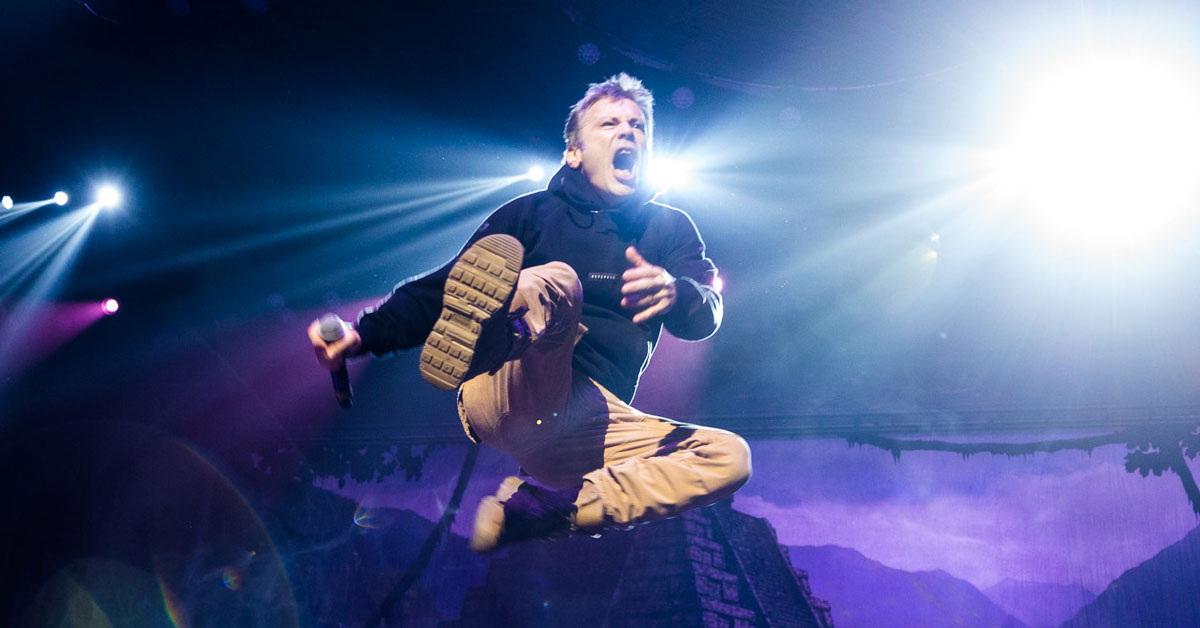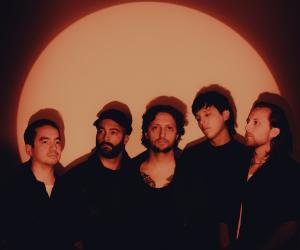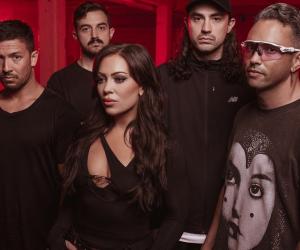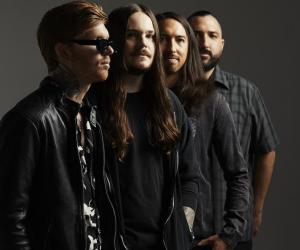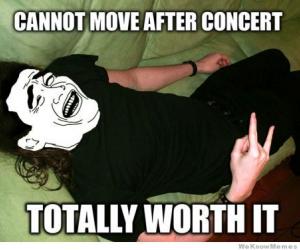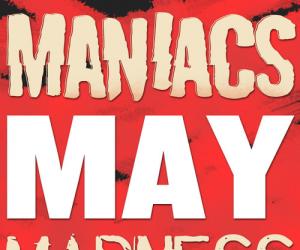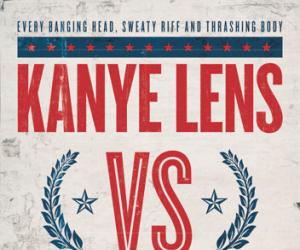We often receive questions from young metalheads and aspiring photographers about how they can get involved in the mysterious art of professional gig photography, so we decided that it was about time that we pulled together a resource which should hopefully answer all of your questions.
To do this, we got in touch with photographer Kane Hibberd, who over the years has photographed some of the biggest artists going around both in the studio and at the show. Read on for advice straight from the horse's mouth. We hope to see you snapping away at the next show!
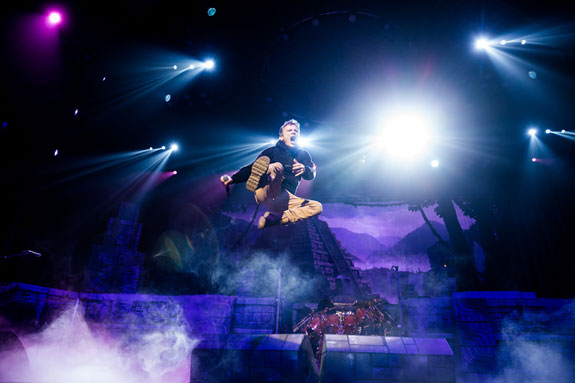
Have you ever taken a killer photo of your favourite artist at a gig on your phone and thought, “I should do this with a camera next time”? But what’s the best camera to use? How do you get permission to bring a camera to a gig that doesn’t allow professional cameras? How do you get access to the pit at the stage? Just like me, you will probably have these and a million more questions when you’re starting out and it all seems very overwhelming. Especially when you don’t know anyone and are still learning how to get the best out of your camera.
But if you’re patient, passionate, creative and respectful it’s a very achievable goal to be seeing some of your favourite bands as a photographer and make some lifelong friends who are like minded music fans and photographers.
Before I go too much further, it’s good to know what you’re getting yourself into and be honest from the outset. A little disclaimer: Music photography is a very, competitive field. There are lots of people who love doing it, but for most people, it’s a hobby. Getting access to shoot is the easy part; getting paid to shoot is another article entirely. This piece is hopefully going to help you get your journey started.
Equipment
Any digital SLR is a great way to practice photography as you can see the results straight away. Learn how to use your camera in full manual mode. The internet is full of resources of how to use a camera so get googling. It’s all about the light! You will be shooting initially in mostly low light so a high ISO setting is your friend and the faster the shutter speed in the exposure, the more action you can freeze.
The next piece of the puzzle is the lens you shoot with. You are better off investing in a better lens than putting your money into an expensive body with a cheap lens. Because you will be shooting in low light, the faster the lens (the smaller the F-stop number) the more light it will let in. Google aperture and read about the relationship between the numbers, versus depth of field. A cheap go-to lens when you are starting out is 50mm 1.8. Different manufacturers will have different variations of this lens.
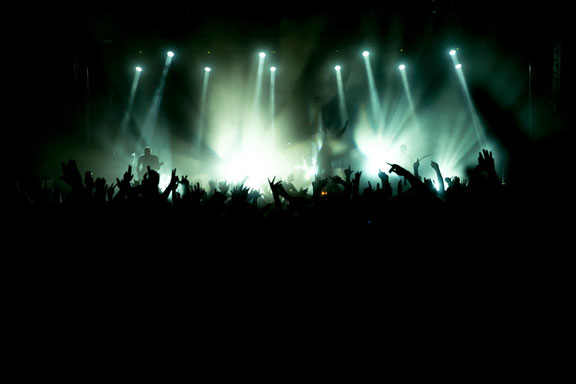
Shoot, Shoot, Shoot
Start at the bottom. Go to a gig at a house party, a local pub, or club. Yes, you will have to pay, but you were going to go anyway weren’t you? Or if you have mates in a band, tag along. By starting with the smaller venues, they won’t have photography restrictions. You can take your DSLR (or SLR if you have the money to shoot film) and shoot to your heart's content. Be respectful and wary of other people around you. An artist doesn’t want a camera stuck in their face the whole night and an audience member doesn’t want to view the show through your camera, so move around to different positions. This way you can play around with different angles and create different pictures. Shooting from the back of the room gives the picture context of how many people were there as well as the full light show. Up close allows you to capture all the sweat and action.
Shoot, shoot, shoot and experiment with different settings. Everything happens so fast on stage, so when you are starting out, don’t get bummed out about missing moments or not being quick enough. The only way you can start to anticipate and know what settings to use on your camera is by practice.
Freeze the action, blur it, use different angles, up high, down low. Use depth of field and foreground objects to your advantage. What do you find interesting? Is the artist wearing a cool set of boots or is there an interesting sticker on the guitar? Look for details. Your pictures are going to show people what is interesting to your eye.
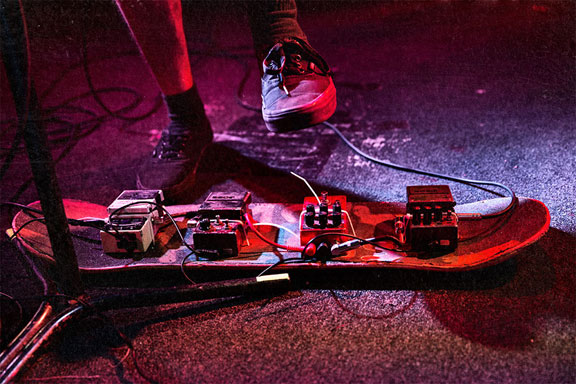
Keep Your Edit Tight
Quality over quantity. You will start to impress people with 1 or 2 killer photos rather than 50 average photos. It’s hard because sometimes you have similar shots that are all good, but you need to make the decision which one you like more. Start an Instagram, Facebook or website (there are plenty of free options out there) and start posting your images. Again, keep your edit tight, don’t bombard people with images. Keep shooting and practising. Over time you will build a folio of great images. And images that you initially loved, you will hate because you’re continually improving. This is a good thing!
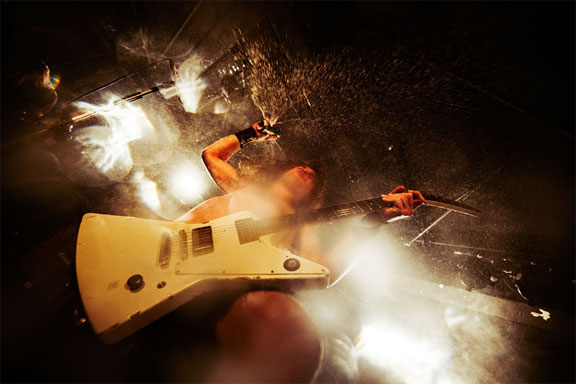
Pit Access
There are two ways you can get access to a gig as a photographer. You can be shooting directly for the artist or you can be shooting for a media outlet (I’ll also include the promoter and booking agent under media). A media outlet is a magazine or website that has been given free access to cover the event with a review and/or gallery which gives the artist tour publicity and hopefully helps sell further tickets. Depending on the size of the show, you will most likely be granted access to shoot in the pit for the first three songs only. Obey the rules. If it’s just three songs, that means only shoot for THREE songs. There is no quicker way to get yourself banned from photographing future shows by disobeying this simple rule.
Once you feel you are comfortable with your camera settings and have a good set of images, you should now start to approach media outlets and bands with your work. But start with the smaller websites / local artists. Have a look at their images. Does your work stack up?
Remember, you want to take full advantage of any opportunity that you are given, so approaching Metallica probably isn't going to result in anything. And imagine if Metallica did respond. Do you think you could make the best use of that opportunity so early in your days of shooting, with their expectations?
By starting with smaller websites and bands it allows you to grow and not put too much pressure on yourself. As your work continues to get better, the media outlet will send you to bigger shows. Same thing if you are working directly with a band. Hopefully, they play bigger shows and get better support slots at different venues. Before too long you might find yourself on a tour.
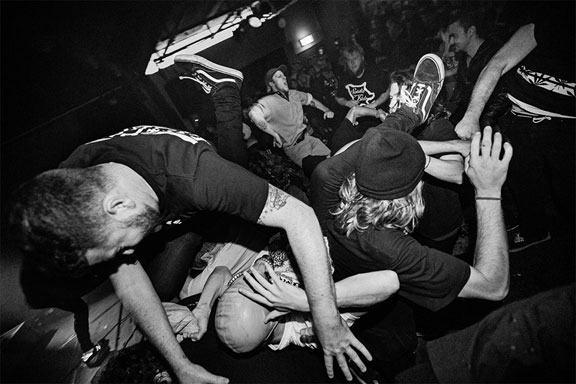
Patience
Don’t be too set on wanting to shoot the biggest artists straight away. You are better off shooting the smaller shows, being critical of your work and building up a really good portfolio than having an average photo of a famous performer. There are so many people shooting gigs each night that you need to build a folio that is going to give you the edge over everyone else.
A great photo doesn’t have to have someone famous in it. It just has to evoke some sort of response from the viewer. Do your photos do that?
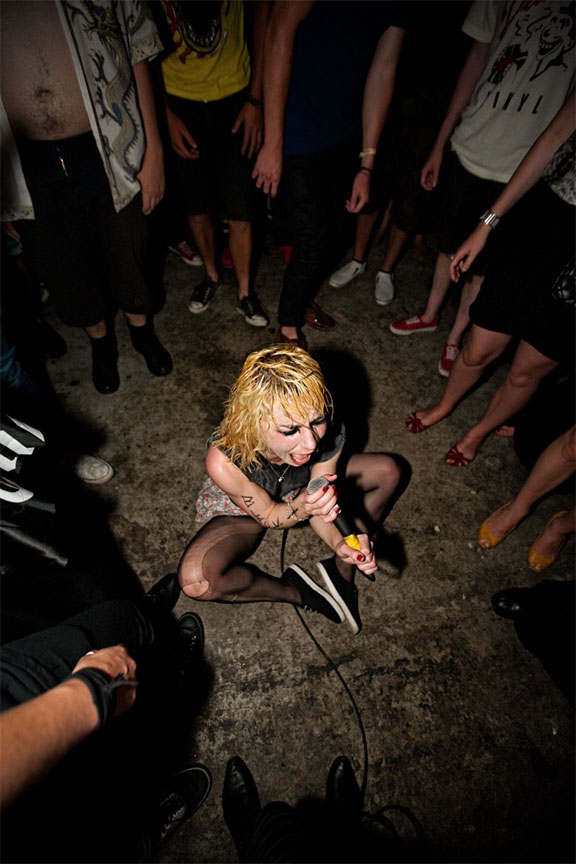
Check out Kane's website or follow him on Instagram now.
